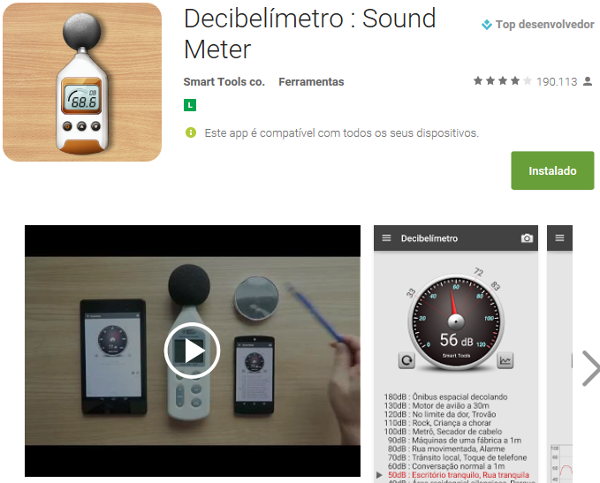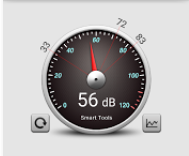Translated into English by Patricia Lima Carlos.
The measure of the sound intensity is usually made in decibels (dB) and the instrument doing this measurement is the decibel meter.
In Figure 1 we have a commercial decibel meter used in the measurement of ambient noise, important for labor regulations.

The Decibel (Bel)
The Bel (B) is a unit used to express the relation between two quantities of the same nature (power, current or voltage) in a logarithmic way.
The formulas given below are used to calculate power, voltage or current ratios in decibels (dB) where 1 dB = 0.1 B. The decibel is derived from the common logarithms (base 10).
Note: Because the decibel is a unit of comparison (not an absolute value), in some cases a reference level must be indicated. When working with amplifiers, for example, it is common to adopt a reference level of 1 mW at 600 ohms.
If 1 mW is adopted as a reference, the letter "m" is added to dB, which becomes dBm.
DB = 10 log(Pout / Pin)
Where:
dB is the gain or loss of power (pure number)
Log is the common logarithm of the expression (base 10)
Pout is the output power in watt (W)
Pin is the input power in watt (W)
dB = 20 log(Vout /Vin)
Where:
dB is the voltage gain or loss (pure number)
Log is the common logarithm of the expression (base 10)
Vout is the output voltage in volt (V)
Vin is the input voltage in volt (V)
dB = 20 log (Iout/In)
Where:
dB is the gain or loss of current in amperes (A)
Log is the common logarithm of the expression (base 10)
Iin is the input current in amperes (A)
Iout is the output current in amperes (A)
The Application
We use in our case the Decibel Meter application that can be downloaded in:
https://play.google.com/store/apps/details?id=kr.sira.sound&hl=pt_BR
The initial screen to download the application also shows others that can be downloaded with slightly different characteristics.

The scale of measurements that appears on the phone when the application is opened is shown in Figure 3.

To use it is simple. Simply turn on the instrument using the virtual switch and observe the recording of the audio levels.
Below the instrument also appears a graph in which the variations of the sound level are plotted.
An interesting application of this instrument is as a measure of applause in shows or decisions by palms.
It can accurately measure which candidate is most applauded in an audience competition, for example.




